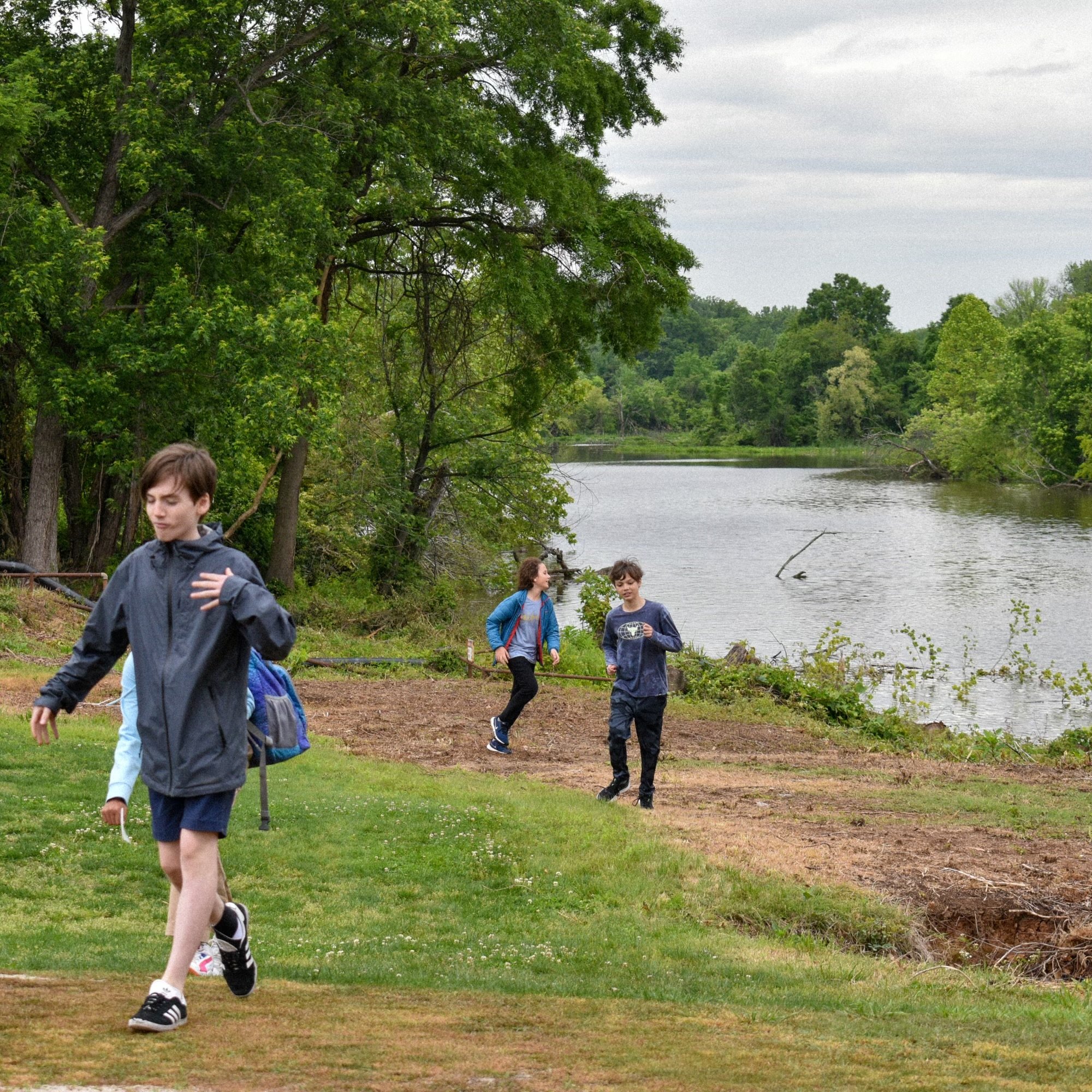Environmental Stewardship STEMs from Golf’s Status as a Living Classroom
Students from nearby Washington, D.C. schools wait for the First Green event to start.
Think back to the days when you were in grade school.
What was one of your favorite class field trips?
For me, I fondly remember a 7th grade field trip to SeaWorld Orlando to visit the manatee rehabilitation center to learn about the gentle animals and the conservation efforts designed to save them. The manatees swam right up to us, gently rolling over for belly scratches while dining on the heads of lettuce and other vegetation we were feeding them. It was truly one of the coolest experiences I’ve ever had with wild animals.
Andrew Szunyog speaks to students at the GSCAA First Green event at Langston Golf Course in Washington, D.C.
Earlier this month, I participated in an event at the historic Langston Golf Course in NE Washington, DC that welcomed 75 students from nearby schools to explore the golf course as a living and breathing classroom. While probably not as cool or as memorable as my trip to SeaWorld, I am hopeful that some students left Langston that day with an emerging curiosity to learn more about the game of golf and its connection to Science, Technology, Engineering and Math subjects.
The students, made up of 6th, 7th, 9th and 10th graders from two different Washington, DC schools, participated in a Golf Course Superintendents Association of America (GCSAA) First Green event that was held in conjunction with the National Golf Day festivities being held on Capital Hill and the National Mall.
The GCSAA First Green program is an innovative educational initiative that combines golf and environmental stewardship to provide hands-on learning experiences for students. Through field trips to local golf courses, students get the opportunity to learn about various aspects of golf course management and environmental sustainability. They participate in activities that showcase the tools and methods used by golf course superintendents to manage golf courses while emphasizing the importance of environmental conservation and the role golf courses play in preserving natural resources, managing ecosystems, and promoting biodiversity. It also highlights the career opportunities available in the golf course management industry, an aspect of golf that needs more female, LGBTQ+ and minority representation.
The Langston First Green event featured 4 different stations: the first station was dedicated to irrigation practices and water conservation, the second one discussed the principles of physics in the golf swing, a third station focused on cultural practices and turf care including why air is important for soil and turf grass health and lastly, a fourth station that showcased golf’s environmental stewardship role and the ways in which we use nature-based solutions to manage real world problems like stormwater runoff.
I was given the responsibility of leading the fourth station, which was located near the banks of Kingman Lake. For my presentation, I first wanted to engage the students on why golf courses use chemical treatments like pesticides, herbicides and nutrient supplements (including nitrogen and phosphorus) to maintain optimal turf health. I felt it was important to discuss this topic because it is often a subject detractors of golf point to as a reason why golf courses are bad for the environment. Equally important is demonstrating how golf course superintendents use nature-based solutions to mitigate stormwater pollution and sediment loss: the establishment of riparian or vegetative buffers. I explained to them that vegetative buffers are areas of natural, existing or established vegetation located along the banks of water bodies that are designed to slow the flow of stormwater so it can permeate the soil and go through the natural filtration process.
The location of my station was convenient in that it was adjacent to an area currently undergoing a transition into a vegetative buffer. Knowing full well that the best way to engage students is through activities, I had the Langston Superintendent give me a 25 lb bag of native grass seed and enlisted the help of nearly all 75 students to spread the seeds over an area about the size of two tennis courts.



Driving the Green Take:
The First Green program serves as an exceptional educational platform that showcases golf’s potential to be a foundational community asset that revitalizes ecosystems and communities while empowering students to explore and pursue environmental stewardship and career opportunities in the golf industry.
This was my first event with First Green and I truly enjoyed the opportunity to interact with students on the golf course. I was pleasantly surprised to learn how much the students already knew about stormwater runoff as I was going through my presentation. In fact, one of the teachers who chaperoned the event said it was a subject that was recently covered not more than a few weeks prior, stating it was really great for the students to make the real world connection to their studies.
Sustainable Development Goal Highlight:
SDG 4 - Quality Education - Ensure inclusive and equitable quality education and promote lifelong learning opportunities for all.
GCSAA First Green events provide golf facilities with an easy and actionable way to engage community stakeholders and highlight the positive work that golf course superintendents and their staffs can have on surrounding ecosystems. There are many ways to get involved with First Green, even if you are not a golf course superintendent. Simply visit thefirstgreen.org and contact the representative from your local chapter for more information.


